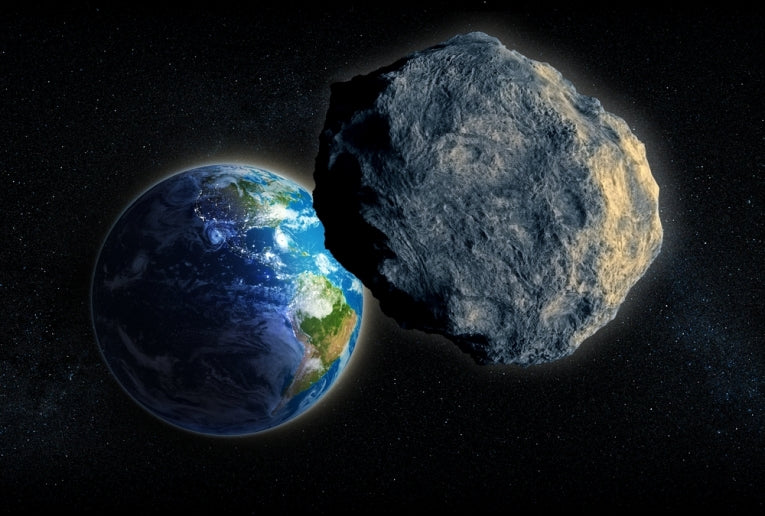An asteroid the size of a house is passing by on Monday evening (31st October). 2011 MD's very nature - probably carbon or an iron/nickel mixture-is fairly obvious, similar to another visitor in February. We were approached even closer by 2011 CQ1, which then came within 5,480 km of Earth. In Socorro, New Mexico robotic telescopes spot these objects about a week before they arrive.
2011 MD is a similar size, about 8 metres across and will get within 12,000 km. Kevin Yates, manager of the Near Earth Object Information Centre in Leicester, said: "This is a tiny asteroid by any standards. It's at the limit of what can be detected." However, there is more to come, as tabloid newspapers are always warning us.
Scientists are really going to enjoy investigating the enormous 2005 YU55 next Tuesday, November 8th. This asteroid is the size of a aircraft carrier, at 400 metres long and fortunately, further away, but still the closest large body for 35 years. Its closest approach will be about 0.85 of the distance to the Moon or 324,600 kilometres (210,700 miles). It orbits the Sun every 396.4 days at a speed of 29 km sec -1. In 1976, NASA missed its last visit, but they are determined to do a "catch-up" study now. Using antennae of the agency's Deep Space Network at Goldstone, CA, and radar telescopes of the Arecibo Planetary Radar Facility in Puerto Rico, they hope to obtain images that should reveal a wealth of detail about the asteroid's surface features, shape, dimensions and general physical properties." The pics of the spherical charcoal black body will be ideal for public viewing unlike this blurred image from the last visitation.

Image credit: NASA/Cornell/Arecibo. Asteroid 2005 YU55, from data taken in April of 2010 (not too clear though)
With a little bit of luck, they should show details as good as 2 metres for every pixel. In 2028, this hopefully friendly object will be boarded by an astronaut, if NASA decides this is the most suitable asteroid for study. Perhaps we could call him or her an "asteroid sailor", as it does look a bit like an aircraft carrier. Emily Baldwin, deputy editor of Astronomy Now magazine, who is eminently qualified to sail asteroids, said it posed no threat to earth. She told us, "It is a great opportunity to make close-up, detailed observations. Studies of asteroids are important not only to learn about the potential threat an impact may have on Earth but also to understand the history of our solar system."

Emily Baldwin, who comments above. Credit: Guildford Astronomical Society










